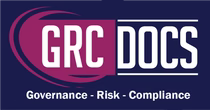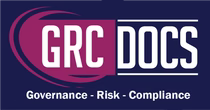SOC 2 Implementation Plan Template Download
Introduction
A SOC 2 Implementation Plan is a structured roadmap designed to help organizations comply with the SOC 2 framework, which focuses on security, availability, processing integrity, confidentiality, and privacy. It ensures that internal controls are properly designed, implemented, and monitored to protect customer data and meet compliance obligations. This plan translates control requirements into actionable steps, covering policies, procedures, risk assessments, monitoring, and improvements. Implementing such a plan not only secures systems but also strengthens customer trust and demonstrates accountability to regulators and partners.

Steps For SOC 2 Implementation Plan
Step 1: Establish Governance and Ethical Standards
-
Define organizational values and standards of conduct.
-
Ensure leadership demonstrates integrity and sets a strong “tone at the top.”
-
Involve the board of directors in oversight of internal controls.
Why it matters: Good governance ensures accountability and builds the foundation for SOC 2 compliance.
Step 2: Define Roles, Structures, and Responsibilities
-
Establish clear reporting lines and authority levels.
-
Assign accountability for information security, compliance, and risk management.
-
Document responsibilities in job descriptions and policies.
Why it matters: Clarity prevents gaps in control execution and ensures ownership.
Step 3: Talent Management and Training
-
Attract and retain competent staff aligned with compliance objectives.
-
Conduct background checks and skill assessments.
-
Provide security awareness and SOC 2-specific training annually.
Why it matters: Skilled and aware personnel reduce risks of accidental or intentional control failures.
Step 4: Internal and External Communication
-
Implement communication protocols to share compliance objectives.
-
Provide confidential channels for reporting incidents (e.g., whistleblower hotline).
-
Share relevant updates with external partners and regulators.
Why it matters: Effective communication enhances transparency and strengthens trust.
Step 5: Risk Identification and Assessment
-
Define organizational objectives and sub-objectives.
-
Identify internal and external risks (e.g., fraud, IT risks, third-party risks).
-
Assess significance, likelihood, and impact of risks.
Why it matters: Understanding risks allows proactive management and resource prioritization.
Step 6: Risk Response and Fraud Consideration
-
Develop mitigation strategies for identified risks.
-
Consider fraud risks, including incentives, opportunities, and rationalizations.
-
Regularly update risk assessments based on business changes.
Why it matters: Strong risk management reduces the probability of security and compliance incidents.
Step 7: Monitoring and Evaluation of Controls
-
Perform periodic evaluations of internal controls.
-
Use audits, penetration tests, and vulnerability scans to validate effectiveness.
-
Communicate deficiencies promptly to management for remediation.
Why it matters: Continuous monitoring ensures controls remain effective as the business evolves.
Step 8: Design and Implementation of Controls
-
Establish control activities to mitigate identified risks.
-
Deploy policies and enforce them through procedures.
-
Implement general IT controls such as change management, encryption, and access restrictions.
Why it matters: Properly designed controls serve as the operational backbone of SOC 2 compliance.
Step 9: Logical and Physical Access Management
-
Apply the principle of least privilege for all system access.
-
Enforce multi-factor authentication for critical systems.
-
Restrict physical access to sensitive facilities and maintain visitor logs.
Why it matters: Protecting systems and facilities from unauthorized access safeguards customer data.
Step 10: System Operations and Security Monitoring
-
Implement monitoring tools to detect vulnerabilities and anomalies.
-
Respond promptly to system alerts and unusual activities.
-
Maintain incident response procedures to contain and recover from threats.
Why it matters: Early detection and quick response reduce damage from security incidents.

Step 11: Change and Configuration Management
-
Establish a documented process for approving and testing system changes.
-
Maintain configuration baselines for infrastructure and applications.
-
Track and review all system modifications, including emergency changes.
Why it matters: Controlled change management prevents introducing vulnerabilities and ensures system stability.
Step 12: Vendor and Third-Party Risk Management
-
Assess the security posture of vendors and business partners.
-
Require SOC 2 or equivalent attestations from critical suppliers.
-
Establish termination procedures and communication protocols with third parties.
Why it matters: Third-party failures can directly impact compliance and customer trust.
Step 13: Continuous Improvement and Review
-
Conduct regular SOC 2 readiness reviews and gap analyses.
-
Document lessons learned from incidents, audits, and evaluations.
-
Update policies and procedures in line with regulatory or business changes.
Why it matters: Continuous improvement ensures that compliance evolves alongside organizational growth.
Conclusion
The SOC 2 Implementation Plan provides a structured path for organizations to align their operations with trust service principles while embedding robust internal controls. By following the steps of governance, risk management, control design, access security, monitoring, and vendor management, organizations can demonstrate accountability and strengthen resilience. Ultimately, SOC 2 compliance is not a one-time exercise but an ongoing commitment to security, confidentiality, and reliability—critical qualities that customers, partners, and regulators expect.





